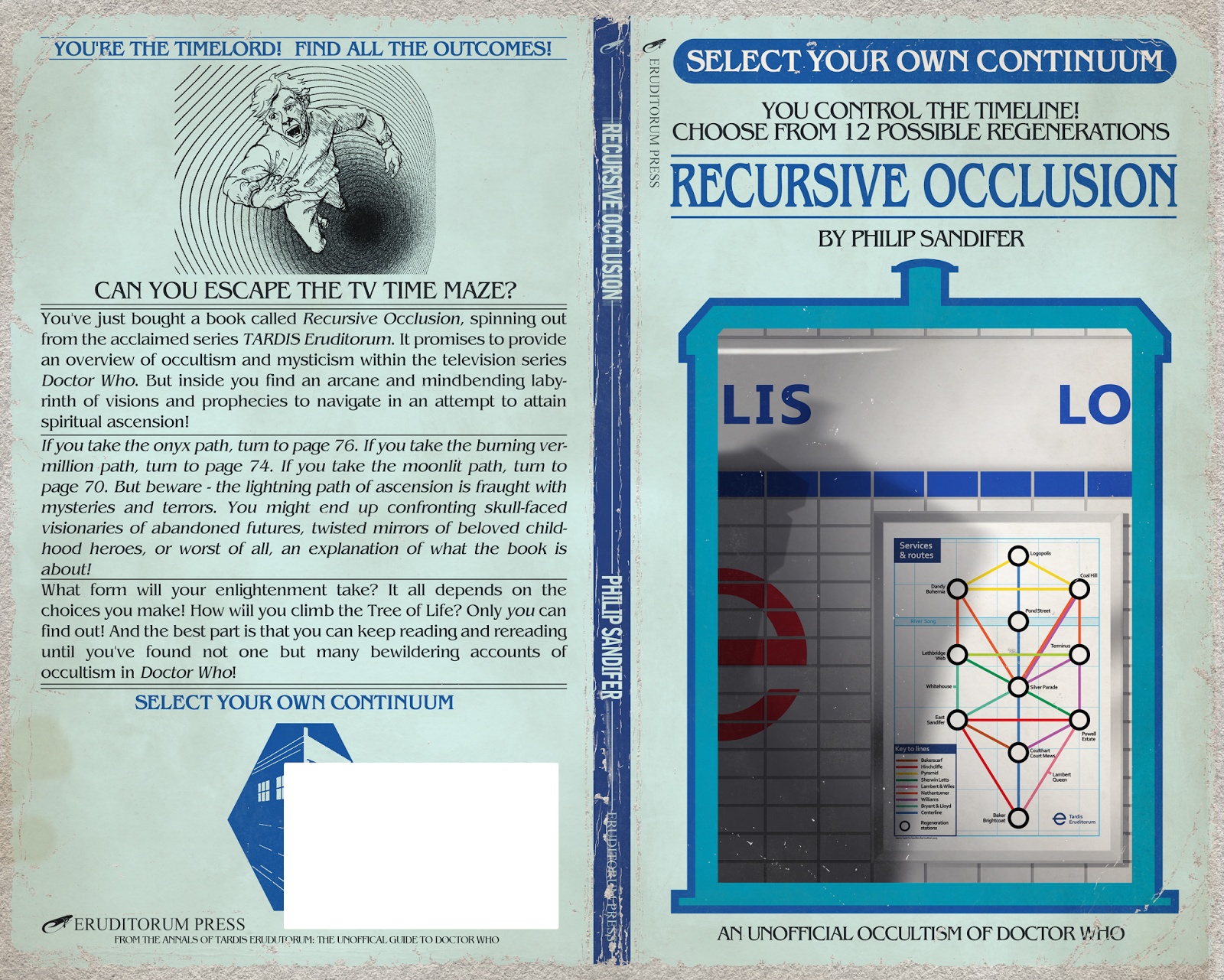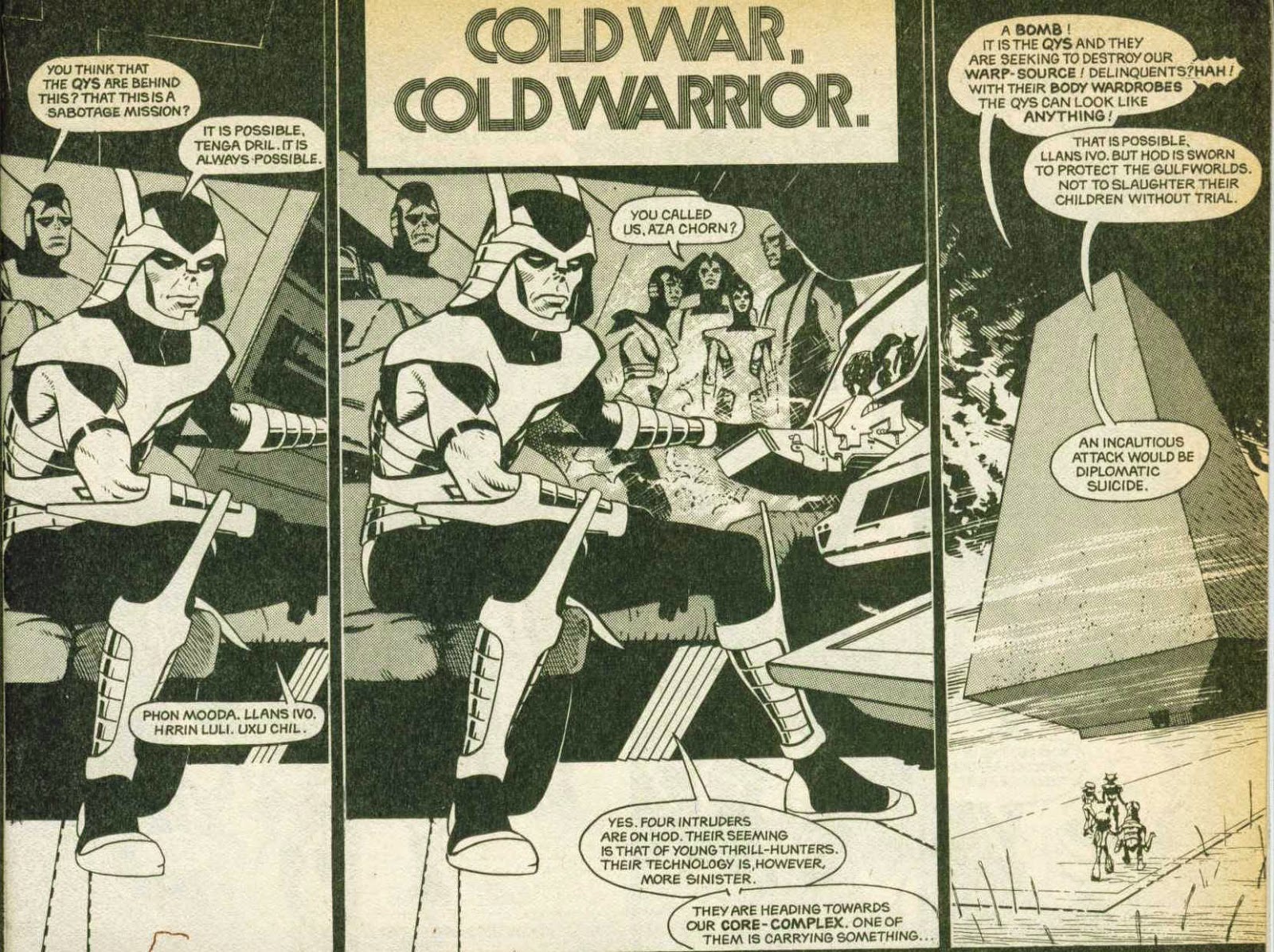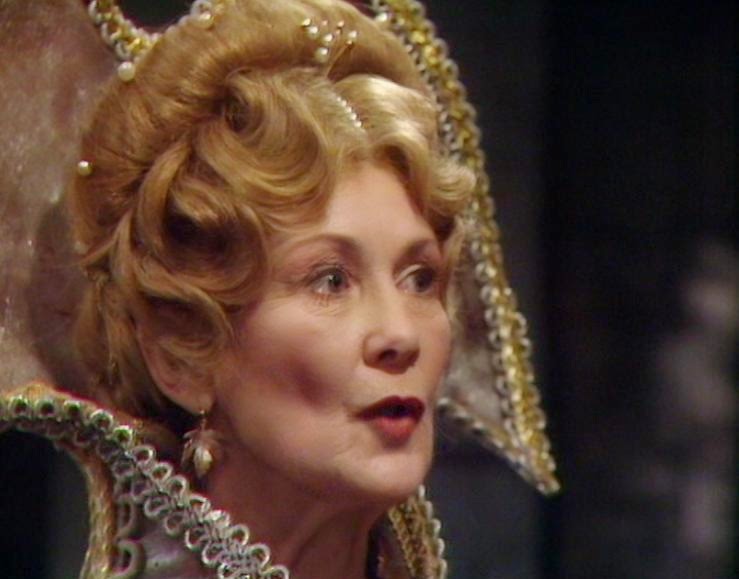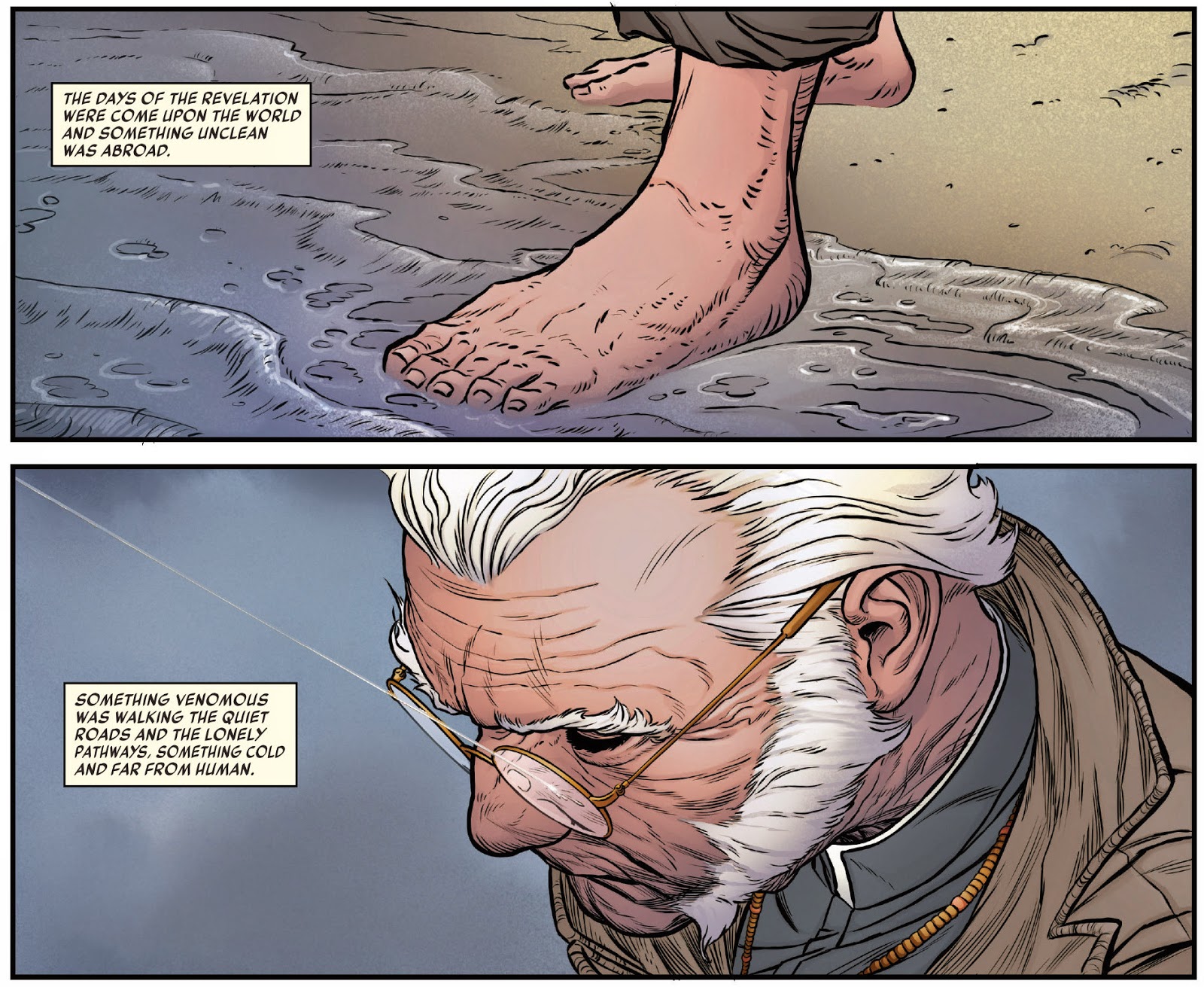This is a bonus post, the topic of which was selected by my backers on Patreon. Voting is currently going on for next month's bonus post, with candidates including Orphan Black and China Mieville. Also Deadwood. Please, if you enjoy my blog and my work, consider chipping in a buck a week or so. Thanks.Let's start with the title - mine, in this case, although Davies's is magnificent in its own right. I say this mostly as disclaimer - there's an awful lot to say about these three shows. They are very, very good. They deserve reams of analysis, and much of that really ought to come from within queer communities. They've gotten some, but not nearly enough. Nevertheless, I am me, and not the vast and polyvocal assemblage of queer communities, and I'm best known for writing a blog about
Doctor Who, so the main angle here is going to be an auteur-centric take on the work of Russell T Davies. Much is left unsaid. Above anything else, I recommend watching them - if you're in the UK, I assume they exist via some sort of catch-up or video on demand service. If you're in the US, it looks like Logo TV is running them starting on April 13th, and hopefully they'll make iTunes and Amazon appearances at the same time.
Seriously, watch them, because they are the best work of Russell T Davies's career, and whatever we might say about the slow march towards an inevitable and entirely predictable end that was the tail end of Russell T Davies's
Doctor Who, Davies remains one of the best television writers in the history of the medium, so a phrase like "the best work of Russell T Davies's career" carries some fucking weight.
So, to recap, after
Miracle Day landed with the wet slap of a piece of tofu, Davies began developing a series for Showtime to be called
Cucumber. This was a show he'd been talking about making since the latter days of his time on
Doctor Who - a show about middle-aged gay men. Unfortunately production on this got delayed when his partner was diagnosed with cancer and the pair moved back to the UK, beginning a several year period of Davies basically not working save for
Wizards vs Aliens and an episode of
Old Jack's Boat that I bet you haven't seen either. Until, eventually,
Cucumber re-emerged, now at Channel 4, and with a pair of spin-off shows in the form of
Banana and
Tofu.
The names, as Davies cheerily explained way back when he was making it in the US, and explains again in the opening scene of
Cucumber, come from a study he read that classified the male erection into categories based on produce, with tofu being the softest and cucumber being the hardest. Indeed, much of the show is unchanged from the early teases, with the first episode retaining much of the description Davies gave Ben Cook back in
The Writer's Tale when talking about what he wanted to do next.
There are a lot of obvious things to say about
Cucumber, although that does not mean they are not, broadly speaking, worth saying. It is, for instance, a fantastically self-indulgent show. It's about a middle-aged gay man who ditches his perfectly successful middle class life in favor of living with a bunch of twenty-somethings, mostly in the hopes that he can cop off with one of them. And yet this can hardly be called a criticism of it. Yes, of course the show that Davies went to after being liberated from what, by the time it transmitted, was a decade long chunk of his career where the only things he did were in some way Doctor Who related is self-indulgent. As, frankly, you'd hope - indeed, insist. Surely what the world wants out of Russell T Davies right now is Russell T Davies.
Put another way, what really stands out about the produce triptych is the sense of confidence it exudes. Davies visibly knows that he could have gotten basically anything he wanted commissioned coming off the back of
Doctor Who - indeed, he arguably tested that theory with
Wizards vs Aliens. And so he simply wrote like he was never going to get another opportunity to get away with it this effortlessly, which he surely knew full well he wouldn't, because it's pretty self-evident that a drama about middle aged gay men is not going to make any sort of cultural dent comparable to that of
Doctor Who. But he's at a position in his career where he can get a triple commission for shows like this, and he's clearly determined not to let that go to waste.
The result is a show that is gloriously brazen, although this is not entirely evident in its earliest episodes. There are bits in the first episode - a monologue about Ryan Reynolds, for instance, and a ridiculously macabre use of Kylie Minogue's "Your Disco Needs You" - that are pure Russell T Davies. But it's in later episodes that his style more decisively comes out - a section in the seventh episode, for instance, in which a sudden rainstorm traps three characters in their car, providing the occasion for an extended conversation in which various personal secrets and shames come out - is perhaps more indicative of the sort of thing Davies is doing with such confidence here. It's a blatantly contrived scene - the sort most writers would chicken out of because of the transparency of the artifice involved. Davies doesn't, and the scene is staggeringly good, with the artifice being, in effect, so transparent as to just get out of the way of the real drama, which is what the characters are saying. (And there really is some amazing stuff in what's said -
Cucumber breaks genuinely new ground in gay drama in terms of its content.)
This has always been one of Davies's great virtues as a writer, although it's one that's easy to make sound less impressive than it is: he is breathtakingly efficient, capable of selling whatever emotion or point he wants to make in a way that is at once completely direct and devastatingly effective. What's joyful here, though, is to see him being so brave with that talent. There's a willingness to do things that announce their own cleverness, like the rainstorm scene, or the fact that the entire eight episode series goes out with a thunderingly brilliant shaggy dog joke, and simply trust that they're going to be well done enough to impress despite being self-evidently proud of themselves. The final episode of
Banana is perhaps the biggest example of this: a two-hander in which half the dialogue is in Yoruba, which ends in a musical number about the exploited underclass of Britain. And to be clear, there's no exaggeration for impact there whereby I'm picking incidental features. That is pretty much how anyone would describe the episode. But while
Banana may provide the triptych's most ostentatious display of confidence, it is not the defining moment of the series. No, that has to go to the sixth episode of
Cucumber.
It is tempting, simply because I know this essay is in part evangelizing for the shows and that some of you are likely to watch them on this recommendation, to simply leave that statement there. Those who have seen
Cucumber are, after all, simply nodding in agreement right now. Those who have not will, if they do watch it, know what I mean as soon as they do, and even I, who generally don't give a toss about spoilers, kind of want to just leave it there and let them experience it on its own terms.
Except that it is a piece of art that is sufficiently resolute to survive all issues of spoilers. Its central plot twist - the death of one of the series' major characters - is announced thirty seconds into the episode, and is a fairly obvious plot development given what leads up to it. Even knowing what happens, the episode is spectacularly dread-laden and unnerving. It's not an episode that anyone would have expected, given Davies's prior work, both because of the sheer physicality of violence within it, and because of some of the specific techniques he uses, including a weird intrusion of magical realism and a final montage that is absolutely chilling and disturbing. It is, in all sincerity, simply one of the best episodes of television ever made.
Which makes it all the more extraordinary that, pound for pound,
Banana is the better show. I mean,
Cucumber is a virtuoso performance. And
Banana, unlike
Cucumber, has some rough edges - the first and fifth episodes are both pretty weak, to be honest. But it is, I think, the show that does more important things. Where
Cucumber is specifically focused on middle-aged gay men, and on letting Russell T Davies work through what are clearly some specific issues,
Banana constitutes his attempt to do
Skins. It's a half-hour anthology show featuring minor characters from
Cucumber, generally the younger generation. Each episode is self-contained, requiring no knowledge of the larger show, and focused on a new character.
The result is an anthology of queerness that goes well beyond the specific gay male culture that has dominated the topic of gay rights and gay equality for decades. And while
Cucumber is definitive proof that gay male culture still has fascinating things to say to the world, the variety and diversity of
Banana is truly a thing of beauty. Its fourth episode is one of the best stories about trans people ever, full of delightfully human and vibrant moments. The sixth is a queer love story about anxiety disorders that is flat out one of the sweetest things I've ever seen, and so beautifully well done that it manages to stand up and be effective even if you watch it right after episode six of
Cucumber.
But it's the second episode of
Banana that, for me, most stands out. One of three written by Davies himself, when it aired I proclaimed it the best thing Davies had ever written, and while
Cucumber 6 makes me have to amend that, it's still an absolute stunner - a story that takes one of Davies's oldest and most venerable themes, unrequited love, and pushes to to new and emphatic heights. As with much of
Cucumber, its impact comes in no small part from its diversity - Davies is writing well outside his default wheelhouse with it, doing a story about a young, poor black woman. And he does incredible things with it.
Banana is also, as befits a younger show, more optimistic.
Cucumber is funny, but its tone is ultimately one of ambivalence and coming to terms with things.
Banana, on the other hand, takes as its default structure the love story, and quite frankly, queer love stories are, aesthetically, one of the most interesting things going on right now, in any medium. (I mused on Tumblr as to why this might be, so I'll offer a token hypothesis - because the queer experience is defined in part by the fear that you're weird and broken, and the love story is, as a structure, uniquely capable of grappling with that anxiety.) It's never as good as
Cucumber's best episode, and its weakest episode is weaker than
Cucumber ever gets, but it's a show the world needs, and not just the eight episodes that exist.
And finally there's
Tofu, which is very much the odd one of the three. Unlike the first two, it's a non-fiction show, based mainly around interviews, both with the cast of
Cucumber and
Banana, and with ordinary people, talking about sex and sexuality. Overseen by Ben Cook, who got the job on the back of his YouTube work, it's an effective and fun little documentary series that I enjoyed as a palate cleanser after the two dramas that preceded it, and it has more than one properly brilliant moment in its runtime. It is perhaps the inessential one - I don't know if Logo is even taking it to the US, and while
Cucumber and
Banana ultimately each need each other (there are several moments in the last two episodes of
Cucumber that are actually paying off bits of
Banana), the truth is that they could function without
Tofu.
But equally, and here we finally get into where I really wish more people were talking about these shows, and particularly people who are not heterosexual men like myself,
Tofu does some fantastic stuff in terms of giving voice to perspectives that don't get enough exposure in popular culture. And that's a huge part of why these are important shows. They're not just brilliant, although they absolutely are that. They're new and fresh and telling stories that we need right now. One of the points I've been hitting on in the Comics Reviews, and really in general of late, is that diversity actually improves stories - that the biggest reason to stop doing stories about straight white guys is simply that other perspectives let you do new and interesting things that you can't do with yet another straight white guy protagonist. And if you want to see what I mean, well, watch
Cucumber,
Banana, and
Tofu.







%2Bpagecover.jpg)



%2B(Digital)%2B(Darkness-Empire)%2B003.jpg)
%2B(Digital)%2B(Darkness-Empire)%2B006.jpg)
%2B(Digital)%2B(Darkness-Empire)%2B004.jpg)
%2B(Digital)%2B(Darkness-Empire)%2B028.jpg)
%2B(Digital)%2B(Darkness-Empire)%2B010a.jpg)
%2B(Digital)%2B(Darkness-Empire)%2B011.jpg)
%2B(Digital)%2B(Darkness-Empire)%2B010.jpg)


















